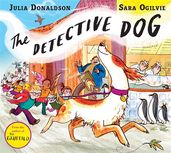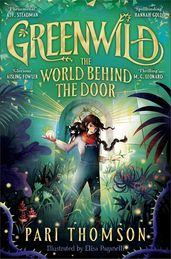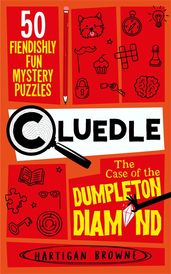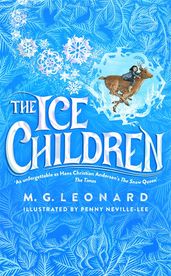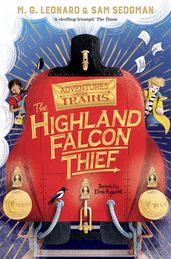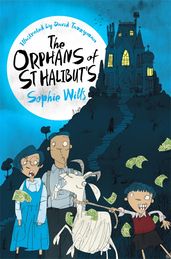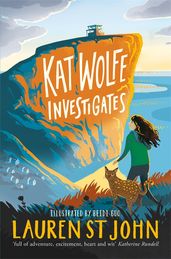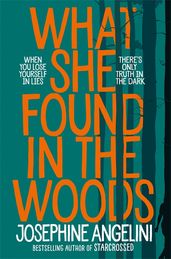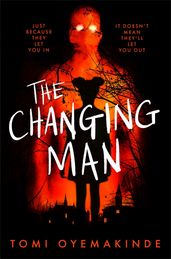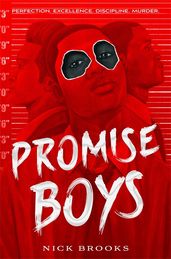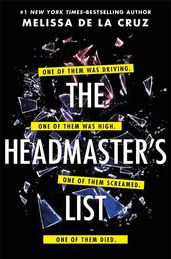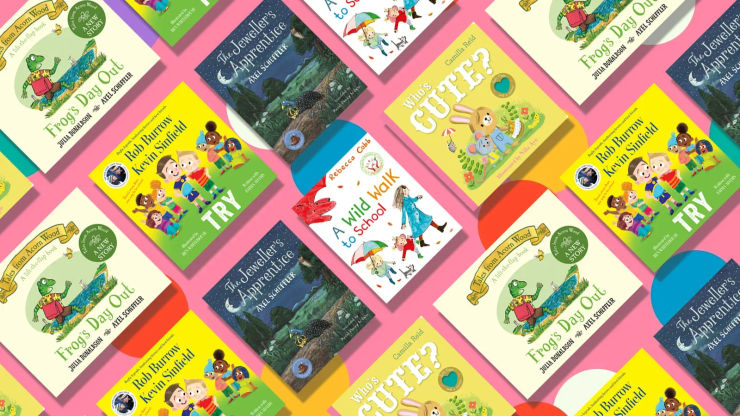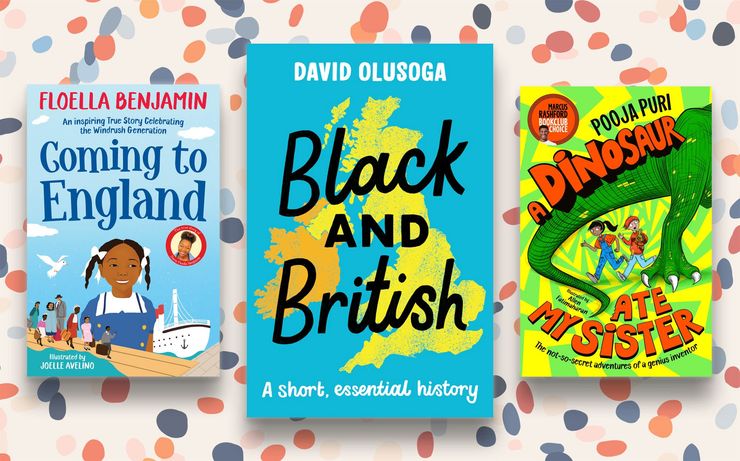The best mystery books for kids and teens
From entertaining picture book puzzles for toddlers to murder mysteries for teens, discover our edit of the best crime and mystery books for kids.

Whether you enjoy storytime with your little ones or are choosing a book for your kids to read alone, there’s nothing like a mystery to keep the pages turning. Packed full of gripping detective stories, wacky adventures and spooky twists, we’ve shared our favourite crime and mystery books for kids, expertly tailored for every age group.
Mystery books for 3-5-year-olds
The Detective Dog
by Julia Donaldson
Peter’s dog Nell is no ordinary pet. Not only does she have a fantastic sense of smell, but she also loves books. When Peter arrives at school to find all their books have disappeared, Detective Dog Nell, with help from the whole class, is ready to sniff out the thief. Perfect both to read aloud and to listen to, Julia Donaldson, author of The Gruffalo, brings us a celebration of books and reading in this mystery book for 3-5-year-olds.
What the Ladybird Heard
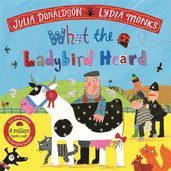
When Hefty Hugh and Lanky Len plot to steal the farmer’s prize cow, little do they know the tiniest, quietest creature of them all is listening in, and soon she has a plan of her own. With charming illustrations and rhyming verse perfect for reading aloud, follow the Ladybird as she sets out to save the day. Can’t get enough of the Ladybird? Discover more of her adventures with What the Ladybird Heard Next, What the Ladybird Heard on Holiday and for festive fun, What the Ladybird Heard at Christmas.
Mystery books for 6-8-year-olds
The Breakfast Club Adventures
by Marcus Rashford
Inspired by his own experiences growing up, Marcus Rashford’s exciting and mysterious adventure is packed with fun-filled friendships, fantastical creatures and incredible investigations. When Marcus kicks his football over the school fence, he fears it’s lost forever. Then, he gets an invite to join the Breakfast Club Investigators and together with friends Stacey, Lise and Asim, he is determined to find out what lies on the other side of the fence – and get his football back, of course!
InvestiGators
by John Patrick Green
Who better to fight crime, go undercover and save the day than alligator secret agents, otherwise known as The InvestiGators! When chef Gustavo is kidnapped from his bakery, the InvestiGators must work together to find the culprit. Armed with just a moustache and a rolling pin, can they find Gustavo and stop the recipes from falling into the wrong hands? Covering themes of teamwork, resilience and problem-solving, this hilarious adventure is packed full of twists and turns to keep young readers engaged.
Agents of S.U.I.T.
by John Patrick Green
It’s Cilantro the chameleon’s first day at a super-secret investigations agency and she’s doing everything she can to prove she’s up to the job. But when she gets her first case, to investigate an alien conspiracy and find a flock of lost sheep, Cilantro realises that catching the bad guys might not be as simple as she thought! A hilarious graphic novel adventure for independent readers, Agents of S.U.I.T is perfect for fans of the InvestiGators and Bunny vs Monkey books.
Goth Girl and the Ghost of a Mouse
by Chris Riddell
As the only child of Lord Goth, life isn’t easy for Ada. Her father believes that children shouldn’t be seen or heard and insists she wears large boots so he can always hear her coming. Instead, she spends her days alone, plodding around their enormous house, Ghastly-Gorm Hall – until William and Emily Cabbage, along with a ghostly mouse called Ishmael, come to stay. The three children begin to unravel a plot that Maltravers, the mysterious indoor gamekeeper, is hatching. Ada and her friends must work together to foil Maltravers before it's too late!
Mystery books for 9-12-year-olds
Greenwild: The World Behind The Door
by Pari Thomson
An extraordinary fantasy book with an environmental twist and a mystery at its heart. Daisy Thistledown has escaped from boarding school and is trying to find her missing mother. Her search takes her across London and through a hidden doorway into a world bursting with plants and magic: the Greenwild. But it soon becomes clear that all is not well. Can Daisy revive the Greenwild, save our world, and solve the mystery of her mother's disappearance? A botanical genius, a boy who can talk to animals and cat with an attitude are on-hand to help.
Cluedle: The Case of the Dumpleton Diamond
by Hartigan Browne
Can you work out Cluedunnit? Perfect for mystery fans, Cluedle is a funny, mystery puzzle book for code-cracking families and skilful young super sleuths. Solve 50 fun brain-busting puzzles to reveal clues and uncover the mystery in the village of Dumpleton. Team up with world famous private investigator Hartigan Browne and crack the curious case of the missing Dumpleton Diamond. The ideal activity book for holidays, car journeys and rainy days!
The Ice Children
by M. G. Leonard
The Ice Children is an exciting, modern, magical mystery adventure inspired by classic fairy tale 'The Snow Queen'. On a cold December dawn, young Finn Albedo is inexplicably frozen at a park, yet he remains alive. His situation appears to be tied to a vanished enchanting book. Finn's sister, Bianca, grows alarmed as more 'Ice Children' cases come to light. With time running out, Bianca navigates a dangerous winter world, which deceives with its beauty. Can Bianca unravel the truth and rescue the Ice Children, including her brother, from their freezing fate?
The Highland Falcon Thief
by M. G. Leonard
Aboard Britain's renowned steam train, the Highland Falcon, Harrison Beck and his Uncle Nat are swept into a thrilling chase for a missing jewel. As fresh friendships form and elusive whispers fill the dining car, Harrison finds himself in the heart of a baffling investigation. Can he uncover the truth before their journey reaches its final destination? The Highland Falcon Thief can be enjoyed as a standalone novel, or as the first book of six in The Adventures on Trains series.
The Orphans of St Halibut's
by Sophie Wills
Perfect for young readers who love spooky adventures, The Orphans of St Halibut’s is a hilarious caper from debut author Sophie Wills and bestselling illustrator, David Tazzyman. Orphans Tig, Stef, Herc and Pamela have been loving life ever since they buried their mean matron. But they need to make sure no one finds out they’re on their own. Discovering that an Inspector is on his way, they must rely on their powers of persuasion to convince him they are safe or risk being sent to the Mending House, where orphans go but never return… Can these crafty kids outsmart the adults and save their home?
Lightning Falls
by Amy Wilson
Amy Wilson delivers a magical mystery adventure in Lightning Falls – a story of ghosts and friendship. Valerie has spent most of her life living at Lightning Falls with her family, haunting all the guests who come to stay. That is until she meets Joe, a strange boy up on the viaduct. As she follows him, she discovers a bridge beneath the river that leads to Orbis – a mysterious world that Joe claims is Valerie’s real home. But Orbis is under threat and Valerie is plunged into danger as the link between her two worlds begins to crumble.
Kat Wolfe Investigates
by Lauren St John
Perfect for animal lovers, Kate Wolfe Investigates is the first adventure in Lauren St John’s middle-grade mystery series. After Kat Wolfe moves to Bluebell Bay and starts pet-sitting for pocket money, she discovers this idyllic town is not quite all that it seems. After a pet owner disappears from a clifftop mansion, Kat turns to her new friend, Harper Lamb, for help. But soon their mission turns deadly and Wolfe and Lamb are fighting for their lives. Will their unruly animals save the day?
Crime and mystery books for teens
What She Found in the Woods
by Josephine Angelini
Devastated by a scandal, Magdalena retreats to her family home. Battling over-medication and self-doubt, she meets Bo — a captivating, wild spirit who brightens her world. Just as hope sparks, a horrifying discovery in the nearby woods shatters her newfound peace. Can she trust anyone, even herself, in this waking nightmare? What She Found in the Woods is an engrossing thriller that immerses readers in a gripping tale of suspense, drawing them into Magdalena's tumultuous journey of trust and uncertainty.
The Changing Man
by Tomi Oyemakinde
A creepy boarding school setting, a decades-old legend, and the mystery of missing students that no one is trying to find. The Changing Man, the haunting debut novel by Tomi Oyemakinde, has all the ingredients a gripping thriller needs. Join Ife and Ben as they investigate the haunting disappearances of their friends in their prestigious school’s haunted halls and find themselves in more danger than they could have ever imagined. You won’t be able to put this book down.
Promise Boys
by Nick Brooks
This trailblazing, blockbuster YA mystery follows students J.B., Ramón and Trey, three boys of colour, who must investigate their principal’s murder to clear their own names. For years, the pupils have been following the Principal Moore Method at the Urban Promise Prep School, where students are forced to follow strict rules in an attempt to help them avoid the fates of many men in their neighbourhood. But when Moore is murdered, the trio emerge as the case’s prime suspects. To prove their innocence they band together to track down the real killer.But is the true culprit hiding among them?
The Headmaster's List
by Melissa de la Cruz
For older readers (14+)
In Melissa del la Cruz’s first YA thriller four Los Angeles prep students find themselves at the centre of a fatal car crash and go to extreme lengths to bury the truth. But Argyle Prep is full of questions about the crash and determined to find the answers. Set in the glitz and glamour of an elite LA private school, a place ruled by pedigree and privilege, nothing is simple. Perfect for young adult crime thriller fans, The Headmaster’s List is a page-turning and addictive whodunnit.
Discover more with the best adventure books for kids
